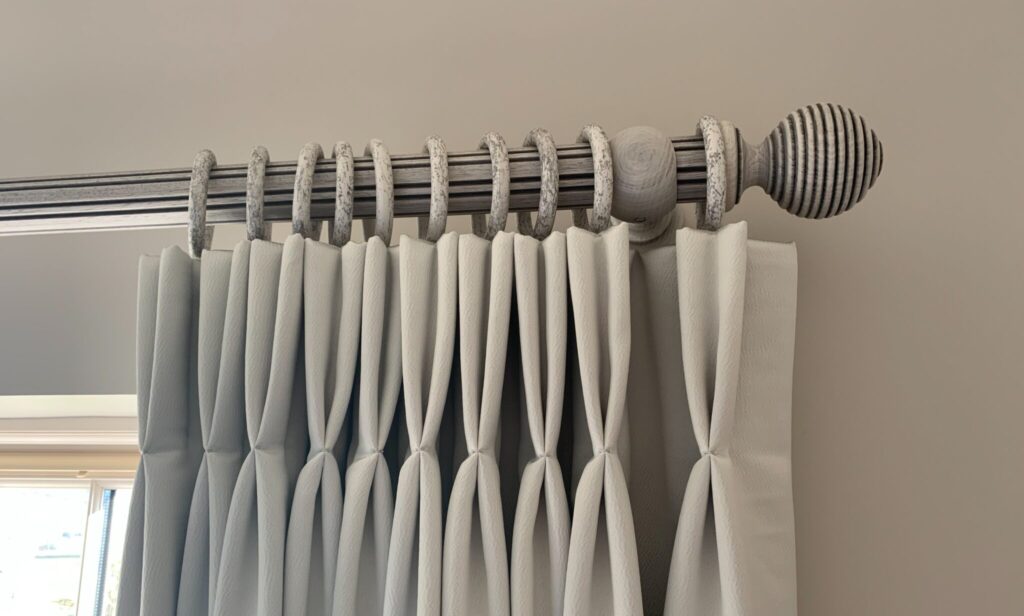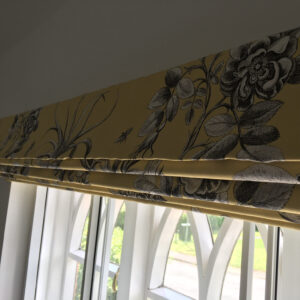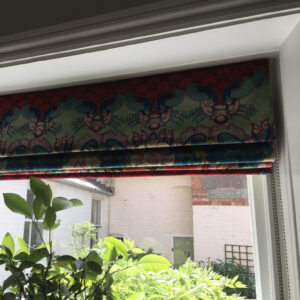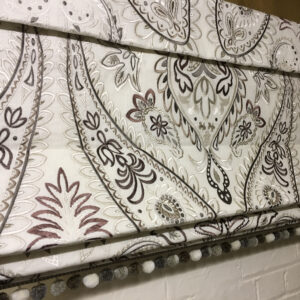Curtains and blinds from Curtains by Design are made with love and designed to last. Our customers come back to us, often after upwards of ten years, saying, “There’s nothing wrong with my existing curtains but I think it’s time for a change!”
If you look after your curtains and blinds they will last. All they need is a little TLC every now again again and your investment will pay back dividends.
Curtains

To care for your curtains, use a vacuum cleaner every six months or so to gently remove any residual dust from the surface of the fabric. Open windows and doors during the summer months to give them a good airing, or hang outside on a warm breezy day.
Look after your pole or track by regularly dusting or vacuuming. A sticky track is often caused by dirt and dust collecting. Use a silicone spray or furniture polish on the clean pole or track to lubricate.
Roman Blinds



Similarly to curtains, a good vacuum every six months works wonders, especially on the top of the track where the dust gathers.
Check the rear of the roman blind to ensure all of the child safety hooks remain in the tape – reattach where necessary.
If the blind becomes wonky over time, it has probably been caught on a window handle or accidentally pulled. The little toggles at the end of the strings can be adjusted to restore balance.
The track should last a long time without malfunction. The chain is designed to release under excessive tension (a child safety feature).
Please contact us if you require and spare parts for your roman blind.
Cleaning Curtains & Blinds
If you feel your curtains or blinds need more than a refresh, we advise consulting a specialist dry cleaning company for advice. Most curtain fabrics can be dry cleaned, some are washable. Fabric manufacturers will always advise to allow up to 5% shrinkage in any cleaning process. In addition, as our products are made from a number of different components – lining, interning, buckram and tapes – each element can be affected differently by the cleaning process.
Choosing Linings & Features
Interlining
We love to use interlining on our curtains for many reasons:
- It adds body to fabrics, creating a truly luxurious look and feel
- An additional layer of insulation helps keep the heat in and energy bills low
- You’re adding an additional layer of protection to your beautiful curtain fabric
- It’s an inexpensive way to make a value fabric look a million dollars
- It’s a must have for delicate fabrics like silk which are easily damaged by UV rays
Blackout lining
We use blackout lining as standard on all of our curtains*. This is because:
- It prevents the beautiful patterns and colours of the fabric design being washed out in the sun – you can still see the pattern when the sun streams through.
- It adds protection to the curtains – UV rays can damage and bleach fabrics over time
- It’s great for bedrooms, preventing light leakage and giving you a great nights’ sleep
Blackout linings aren’t black – ivory is our favourite colour, we also have cream and white and match the best lining colour to the fabric or design.
*unless a fabric (e.g. velvet, wool) does not require it
Coloured linings
Beautiful curtains can look amazing from the outside as well. Use a coloured lining to compliment the fabric or choose a ticking stripe for some fun. We can advise on the best fabrics to use as a lining.
Leading edges
A leading edge can have a variety of uses. The practical use is to save the leading edge of the curtain from sun damage as it can easily be changed. Otherwise it can add a splash of colour or pattern to a plain curtain. Want to use an expensive fabric but don’t want to break the bank? Use it as leading edge on a plain curtain to create a feature. Then use the remnants for cushions to make the pattern go further. Contact us for advice.
Embellishments
We love a bit of trim, a braid, some pompoms. A contrast band, diamanté trim, Swarovski crystals or fabric covered buttons on your pinch pleats.
Go to town or add a subtle touch. Either way, those little extras can really finish off the look and make your room that little bit more special.
Tiebacks & Holdbacks
Tiebacks
Tiebacks come in all shapes, sizes and styles. From simple ropes to flowing tassels, we’ve selected our favourites to complement the style of each edit. They are useful if you want to pull the curtains back to allow as much light into the room as possible, or if you are going for a truly glamorous look with a big swoosh of fabric and a decadent puddle.
Don’t forget to match your tieback hooks to your pole. If you have a wood pole, match to your window handles, door handles or light fittings.
Holdbacks
Holdbacks protrude from the wall and your curtains tuck behind them. They’re a little more rigid than tiebacks and need to be fixed to the wall directly beneath the curtain so don’t tend to work in bay windows.
Cushions
Cushions are a great way to use up remnant fabric and can help to tie a scheme together. If you’re using a patterned or coloured curtain lining or adding embellishments to your roman blind, use those elements on cushions to continue the flow of the scheme across the room.
Piping the edges of cushions in a contrast fabric can really make them pop. Using a different fabric front and back gives you versatility and can bring colour into the room depending on your mood.
There are many shapes and sizes of cushions to choose from – we can advise when you order.
